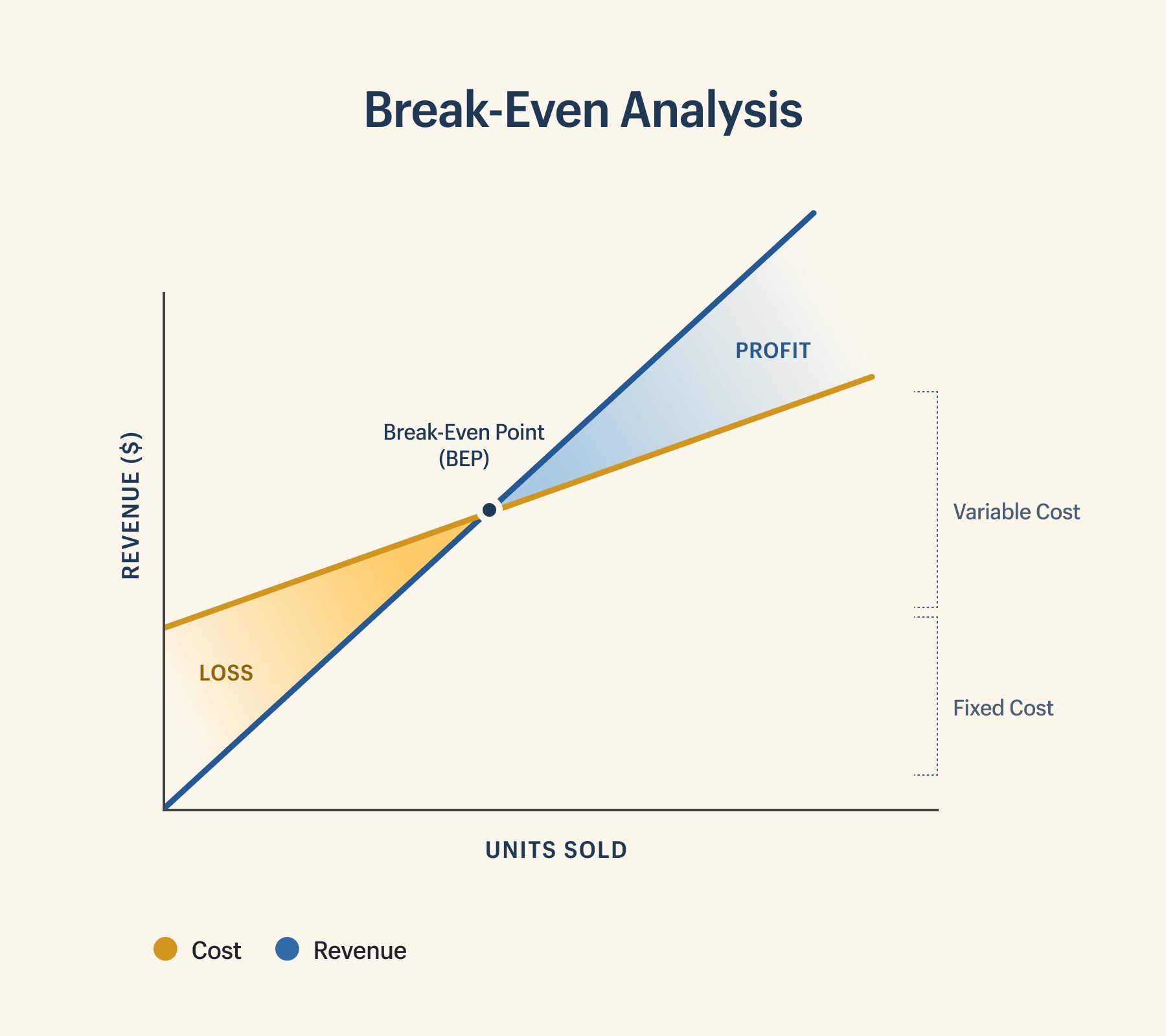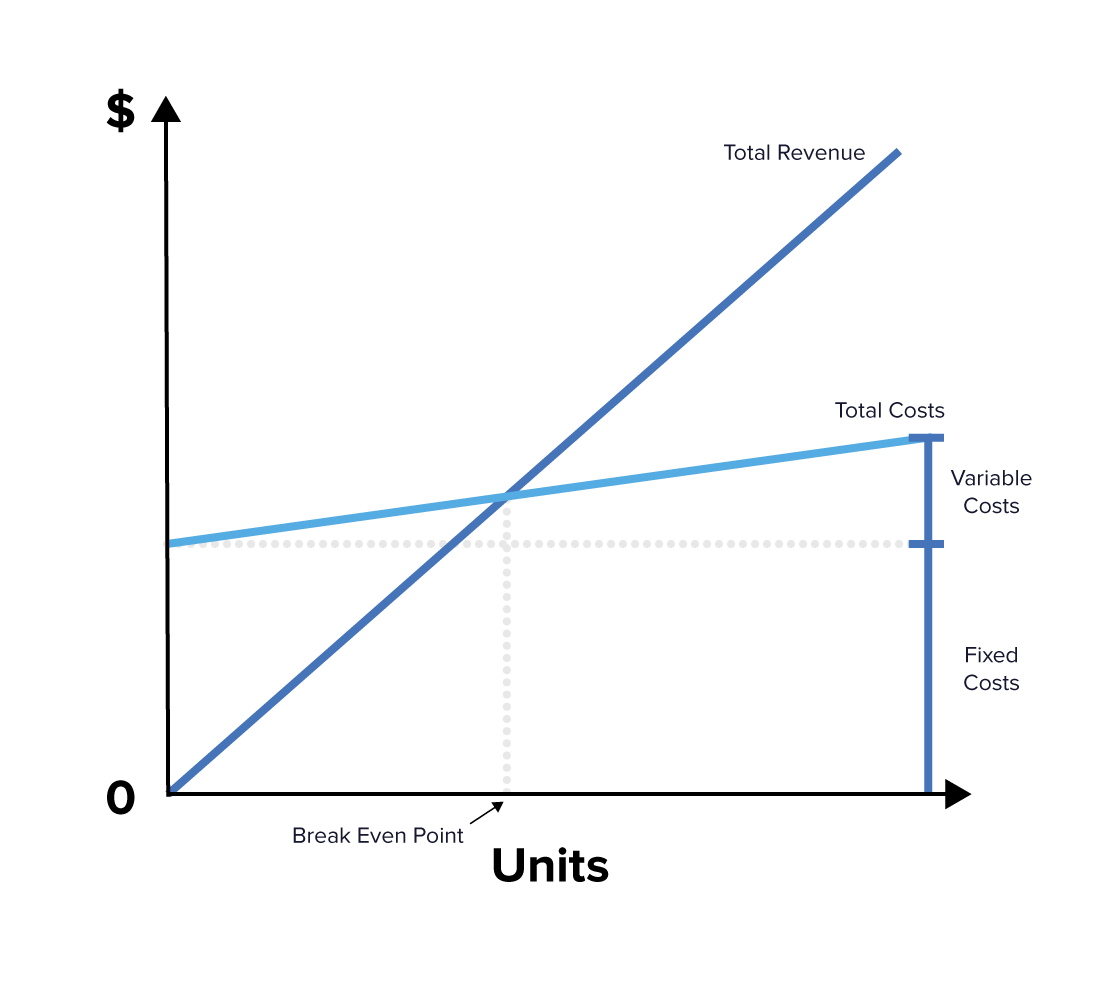

V = variable costs per unit of production, The break-even point is found faster and more accurately with the following formula::ī-E = break-even point (units of production), However, graphing the cost and income lines is laborious. The graphic method of analysis helps the reader understand the concept of the break-even point. Production greater than this level generates positive revenue losses are incurred at lower levels of production.įigure 1: Graph form of break-even analysis. A vertical line down from this point shows the level of production necessary to cover all costs. The key point (break-even point) is the intersection of the total cost line and the total income line (Point P).

At any point, the total income line is equivalent to the number of units produced multiplied by the price per unit. This is shown as a dotted line, starting at the lower left of the graph and slanting upward. The total income line is the gross value of the output. The total cost line parallels the total variable cost line, but it begins at the level of the total fixed cost line. The total cost line is the sum of the total fixed costs and total variable costs. Total variable costs of production are indicated by the broken line sloping upward, which illustrates that total variable costs increase directly as production increases. Total fixed costs do not change as the level of production increases. Total fixed costs are shown in Figure 1 by the broken horizontal line. Average variable costs are the variable costs per unit of output or of TVC divided by units of output. Total variable costs (TVC) are the sum of the variable costs for the specified level of production or output. They may include cost of goods sold or production expenses such as labor and power costs, feed, fuel, veterinary, irrigation and other expenses directly related to the production of a commodity or investment in a capital asset. Variable costs change in direct relation to volume of output. Total fixed costs are the sum of the fixed costs. Fixed costs include, but are not limited to, depreciation on equipment, interest costs, taxes and general overhead expenses. To explain how break-even analysis works, it is necessary to define the cost items.įixed costs, incurred after the decision to enter into a business activity is made, are not directly related to the level of production. Break-even analysis computes the volume of production at a given price necessary to cover all costs.īreak-even price analysis computes the price necessary at a given level of production to cover all costs. A break-even point defines when an investment will generate a positive return and can be determined graphically or with simple mathematics. Total fixed costs do not change as the level of production increases.īreak-even analysis is a useful tool to study the relationship between fixed costs, variable costs and returns.Variable costs change in direct relation to volume of output.Fixed costs are not directly related to the level of production.A break-even point defines when an investment will generate a positive return.


 0 kommentar(er)
0 kommentar(er)
